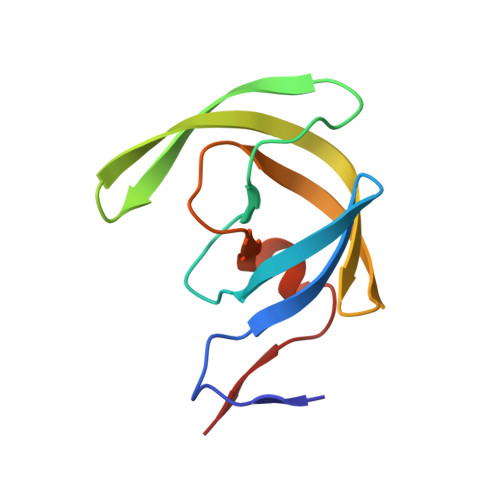Potent HIV-1 protease inhibitors incorporating meso-bicyclic urethanes as P2-ligands: structure-based design, synthesis, biological evaluation and protein-ligand X-ray studies
Ghosh, A.K., Gemma, S., Takayama, J., Baldridge, A., Leshchenko-Yashchuk, S., Miller, H.B., Wang, Y.F., Kovalevsky, A.Y., Koh, Y., Weber, I.T., Mitsuya, H.(2008) Org Biomol Chem 6: 3703-3713
- PubMed: 18843400
- DOI: https://doi.org/10.1039/b809178a
- Primary Citation of Related Structures:
3DK1 - PubMed Abstract:
Recently, we designed a series of novel HIV-1 protease inhibitors incorporating a stereochemically defined bicyclic fused cyclopentyl (Cp-THF) urethane as the high affinity P2-ligand. Inhibitor with this P2-ligand has shown very impressive potency against multi-drug-resistant clinical isolates. Based upon the -bound HIV-1 protease X-ray structure, we have now designed and synthesized a number of meso-bicyclic ligands which can conceivably interact similarly to the Cp-THF ligand. The design of meso-ligands is quite attractive as they do not contain any stereocenters. Inhibitors incorporating urethanes of bicyclic-1,3-dioxolane and bicyclic-1,4-dioxane have shown potent enzyme inhibitory and antiviral activities. Inhibitor (K(i) = 0.11 nM; IC(50) = 3.8 nM) displayed very potent antiviral activity in this series. While inhibitor showed comparable enzyme inhibitory activity (K(i) = 0.18 nM) its antiviral activity (IC(50) = 170 nM) was significantly weaker than inhibitor . Inhibitor maintained an antiviral potency against a series of multi-drug resistant clinical isolates comparable to amprenavir. A protein-ligand X-ray structure of -bound HIV-1 protease revealed a number of key hydrogen bonding interactions at the S2-subsite. We have created an active model of inhibitor based upon this X-ray structure.
- Departments of Chemistry and Medicinal Chemistry, Purdue University, West Lafayette, IN 47907, USA. akghosh@purdue.edu
Organizational Affiliation:



















